From nature to local soul food and drinks: discover new side of Hyogo and Osaka Prefectures

You’re probably here to discover new information about Hyogo Prefecture, but I’ve prepared something special this time. I will explore both Osaka and Hyogo Prefectures to showcase these neighboring areas' unique food and natural scenes. Let me take you through the bustling food markets of Osaka, the innovative yet traditional sake breweries of Kobe city, and the beautiful nature that spans from mountains to the sea.
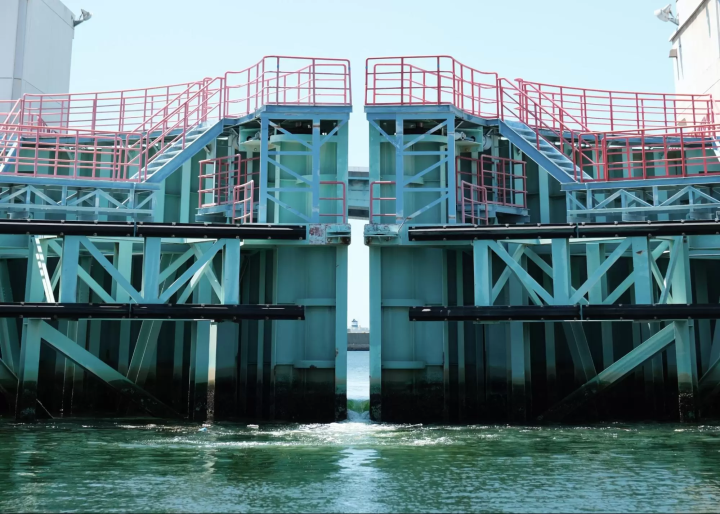
Section 1: Food and Japanese Sake Culture in Osaka and Kobe
Osaka – “Japan’s Kitchen”
Osaka’s strategic location made it a significant commercial and trading center, especially during the Edo period. As Edo (now Tokyo) grew rapidly, the surrounding agricultural regions couldn't keep up with its burgeoning population. Osaka stepped in to fill this gap, supplying Edo with essential staples like sake and oil. Recognizing Osaka’s crucial role in supporting Edo, people began referring to it as“Japan’s Kitchen.”
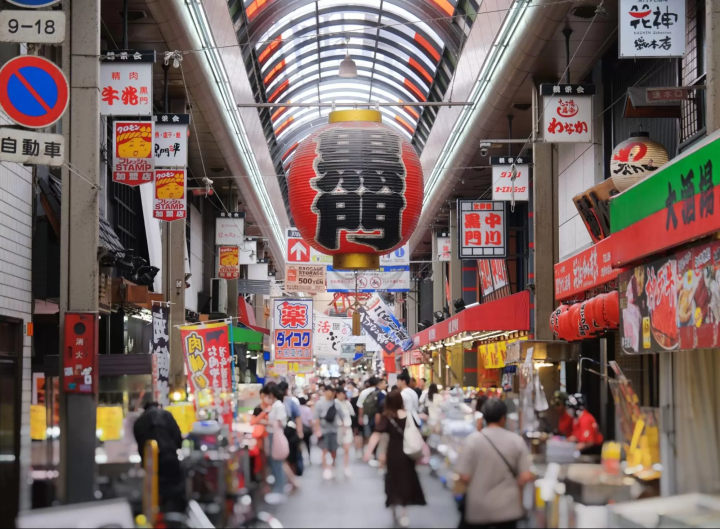
The city is famous for its diverse cuisine. Osaka has been at the forefront of creating iconic Japanese dishes such as takoyaki (octopus balls) and okonomiyaki (savory pancakes) especially in recent years. These dishes perfectly exemplify the city's approach to blending simple ingredients with creative cooking techniques, resulting in bold and satisfying flavors.
I met with a local specialist, Yoko Inagaki, to learn even more about Kansai's food culture. She is an enthusiastic traveler, cook, and teacher who loves sharing the rich food culture of Osaka. Yoko's expertise is remarkable, with over nine years of teaching experience, a national tour guide license, and features in publications like The Telegraph. She has also published a book about Japanese cuisine in Dutch.
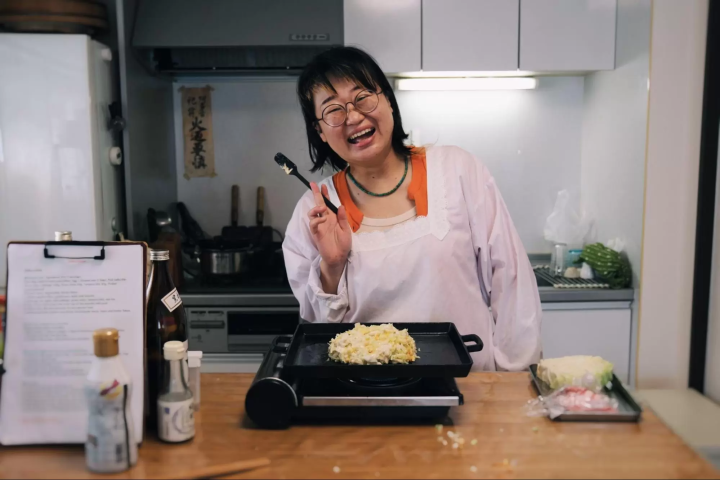
Under Yoko’s guidance, I explored several food markets in Osaka, each offering unique experiences and local flavors. One of them was Kuromon Ichiba Market, often referred to as Osaka’s pantry. It's a haven for food enthusiasts, featuring everything from sashimi-grade tuna to grilled scallops.
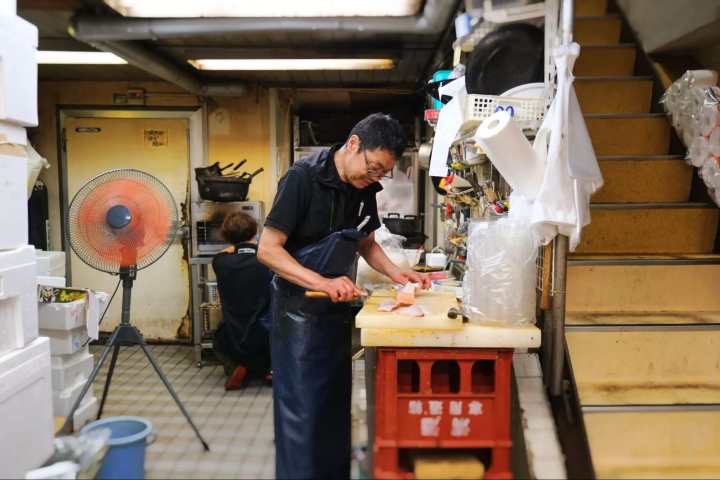
One of the perks of being with a guide is that you can visit lesser-known spots

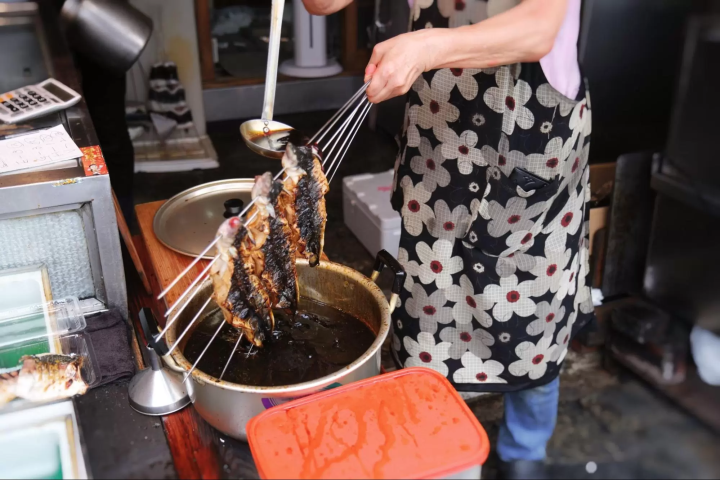
With Yoko, I also visited lesser-known spots cherished by locals: small eateries serving unique regional dishes and secret stalls that offer authentic flavors not commonly found in tourist guides.
Cooking Okonomiyaki
After strolling around the most popular area in Osaka, Dotonbori, together (I do not recommend going there during summer as it was boiling, lol), we took a taxi to Yoko’s apartment to cook. She can teach you various dishes, including gyoza, maki sushi, and even miso-making.
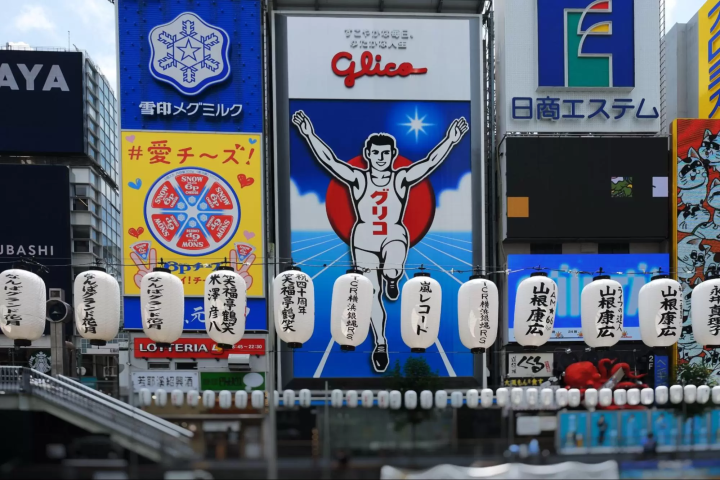
I decided to attempt making okonomiyaki, a savory pancake often referred to as Osaka's soul food. Okonomiyaki is a popular Japanese dish frequently compared to "Japanese pizza." The name translates to“grilled as you like it.”

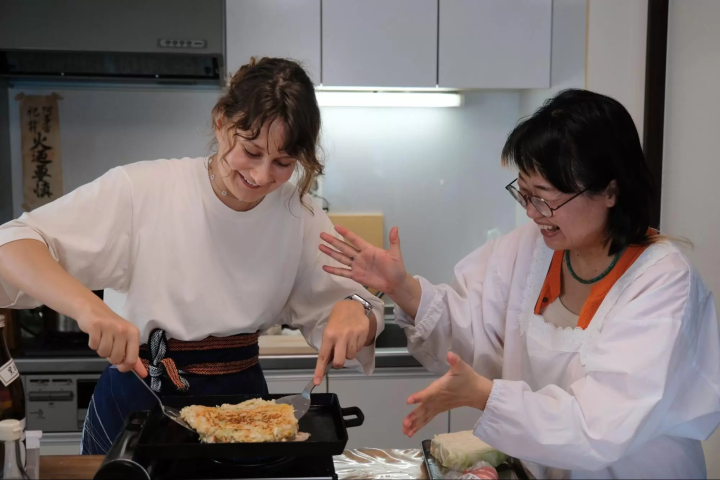
Unlike Hiroshima’s okonomiyaki, which is layered with ingredients and topped with a thin crepe-like batter, Osaka’s okonomiyaki is a hearty mix of flour, eggs, shredded cabbage, and various fillings, all cooked together on a griddle pan. The result is a deliciously messy pancake topped with a tangy sauce, bonito flakes, and sometimes green onions.
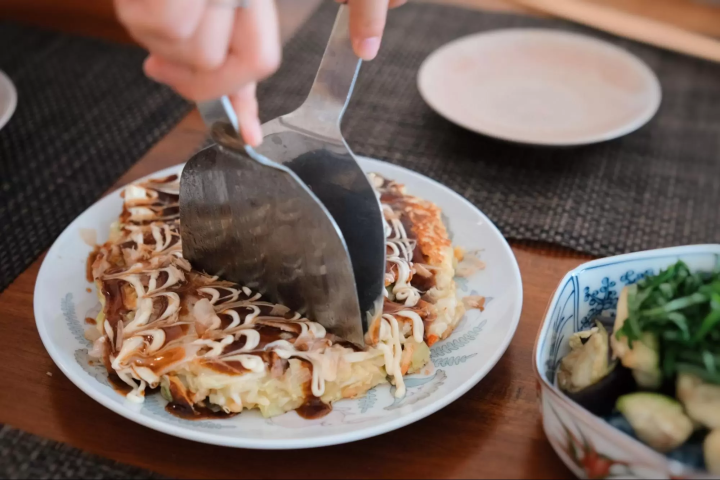
Though cutting and mixing all the ingredients took me a while, the result was not bad for my first attempt. Yoko-san even served me matcha ice cream as a reward for my efforts.
Hyogo – The Heart of Japanese Sake
Hyogo Prefecture, bordering Osaka to the southeast, is renowned for its sake production. After enjoying soul food in Osaka, hop on a train to the Nada Sake District (approximately a 10-minute walk from Mikage Station on the Hanshin Railway) to savor some of the country's finest nihonshu (Japanese sake).
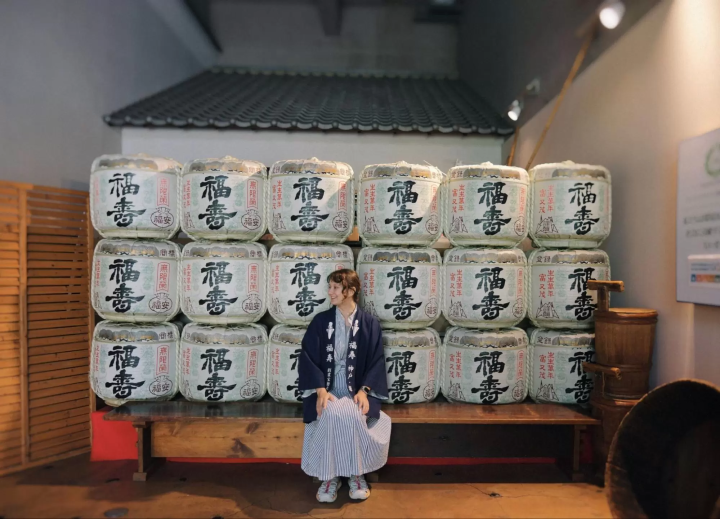
Hyogo is the country's top sake-producing region, known for miyamizu, a mineral-rich hard water from the Rokko Mountains that produces a robust and full-bodied sake. It's also the region that developed Yamada Nishiki rice, Japan's most common sake rice. In Nada Sake District, you can visit the Hakushika Sake Brewery Museum, sip sake, try traditional food from local breweries, and find some souvenirs for your loved ones.
The Art of Sake-Making at Fukuju
I headed to Fukuju Brewery, a local brewery with a long-standing tradition. Conveniently situated by Ishiyagawa Station (just an 8-minute walk), it is renowned for its dedication to traditional sake-making techniques mixed with modern technology.
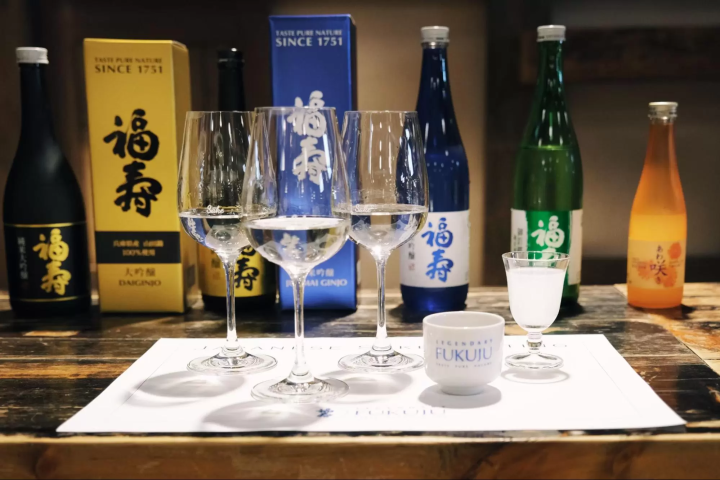
Founded in 1751, Fukuju Brewery has overcome many obstacles, such as natural disasters and wars, yet it continues to be a leading producer of high-quality sake. In 2022, they became the first-ever carbon-neutral sake producer in the world with their Fukuju Junmai EcoZero. Their next plan for the near future is to produce their first organic sake, and in the long run, they aim to achieve an emission-free supply chain, including farming and distribution to the 15 countries they export to, by 2050.
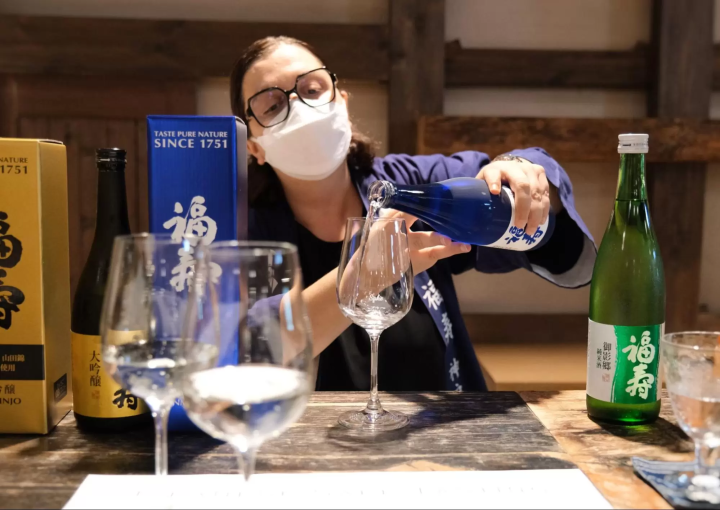
To share their deep knowledge about sake with a foreign audience, they have English-speaking staff, including Cinzia Mesolella, who came from Italy and fell in love with Kobe. Now, she introduces sake to people overseas, including tastings and tours of the Fukuju sake brewery. Reservations are required to tour the warehouse. Free tours can be reserved online. Please inquire to info@shushinkan.co.jp to make a reservation for a premium tour.
(Currently, only free tours can be booked via the website.)
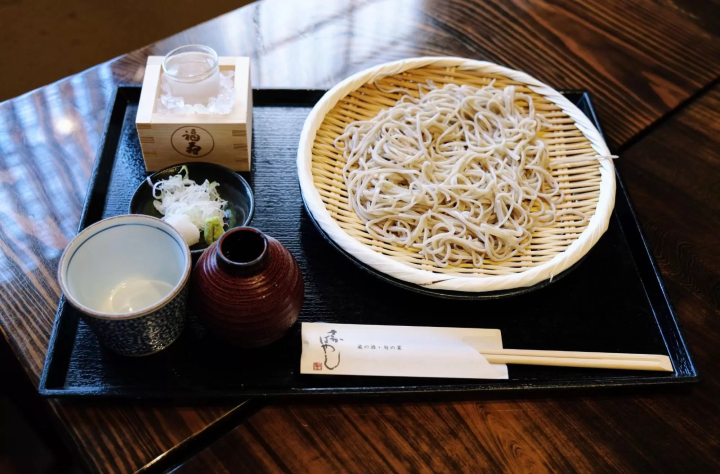
After getting a bit tipsy over the delicious sake tasting (my absolute favorite was Fukuju Awasaki—fruity sake with bubbles just like champagne), I went for lunch at Sakabayashi Restaurant, owned by the brewery. Here, you can try local dishes, including soba buckwheat noodles topped with sake! I’ve never tried anything like this—the aromatic soba noodles paired so well with the fresh but distinguished taste of Fukuju sake.
Sake Museum-The Hakushika Sake Brewery Museum
This brewery is a great place to visit for half a day. If time is limited, I recommend visiting the Hakushika Sake Brewery Museum. It has wonderfully present exhibits with comprehensive English coverage, offering a glimpse into Japan’s sake-making heritage.
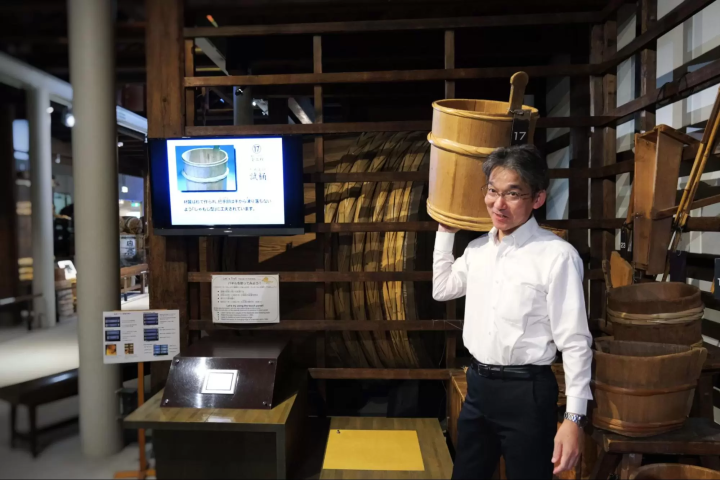
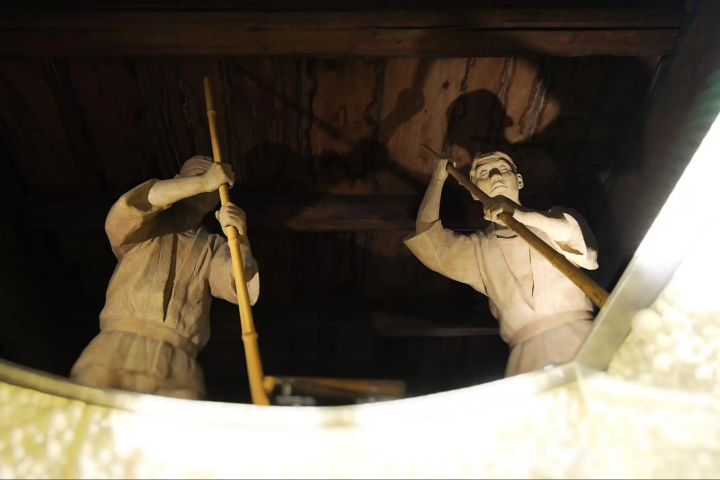
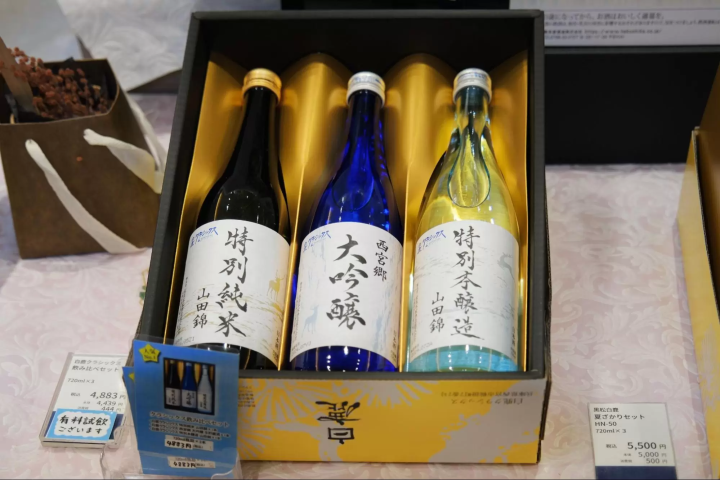
The museum is housed in a building constructed in 1869, and the tools used in sake brewing until the mid-1960s are carefully preserved and displayed to introduce the rich history and techniques of sake brewing. Visitors can explore the original brewing processes and tools through carefully recreated scenes and exhibits, including life-sized mannequins. Take advantage of a chance to buy different sake and snacks made by Hakushika Sake Brewery at the shop next to the museum to take home.
Section 2: Contrasting Landscapes – From Mountains to the Sea
The natural beauty of Osaka and Hyogo is as diverse as their culinary offerings. The mountains in the north of Osaka offer a peaceful retreat, while the coastline near Kobe presents stunning sea views.
Minoh - the green side of Osaka
Osaka might be most famous for its colorful, busy streets, but it has much to offer for nature enthusiasts, with hiking trails that take you through forests and provide panoramic views. For example, just 30 minutes from Osaka Station, you can find Minoh - a hidden gem in the mountains known as the "Forest of Maple Trees."
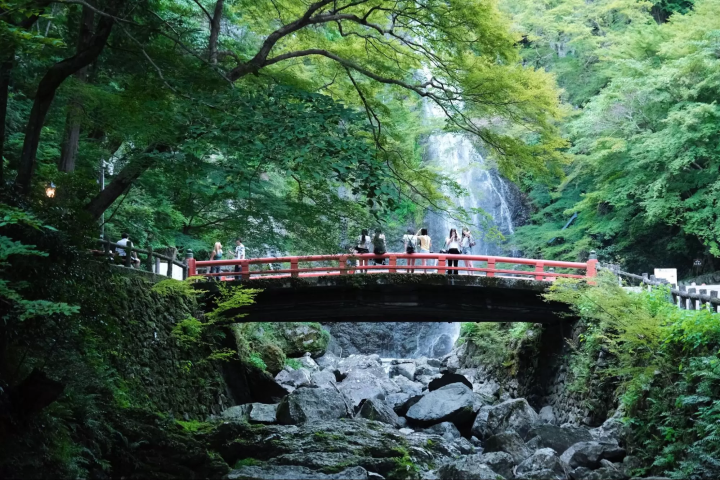
Start your journey at Minoh Station and hike alongside a crystal-clear river and lush green forest. If you’re lucky, you might even encounter wild monkeys on your way—a different side of Osaka many visitors miss. The hike's highlight is Minoh Waterfall, a breathtaking 33-meter cascade that’s been a beloved spot for locals, especially during the unbearably hot summer.
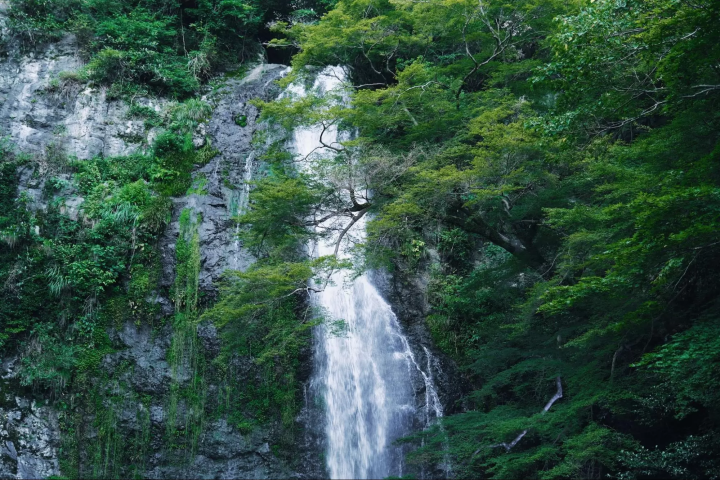
If you come in autumn, you’ll be rewarded with one of the most stunning foliage displays near Osaka. Remember to travel during weekdays to enjoy the place, as weekends can get crowded with locals coming for maple viewing.
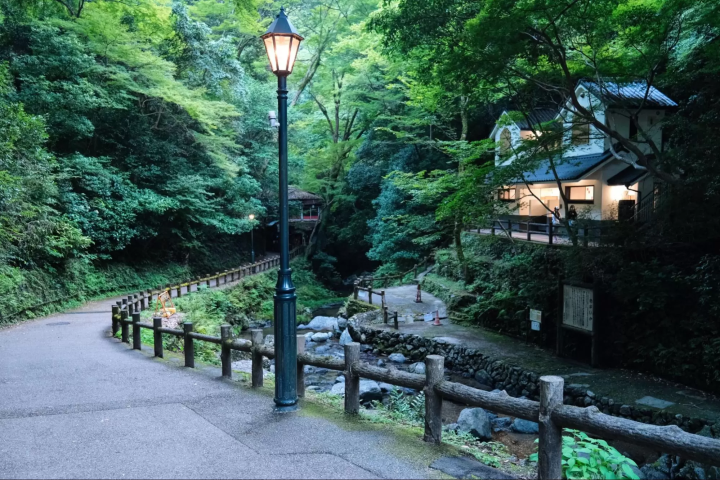
The "Temple of Victory" - Katsuoji Temple
If you have a whole day, take a taxi to Katsuoji Temple, famous for its countless daruma dolls. This temple is a place where wishes for success come true. Known as the "Temple of Victory," people visit here to pray for success and good fortune and take colorful pictures of darumas left by visitors all over the place.
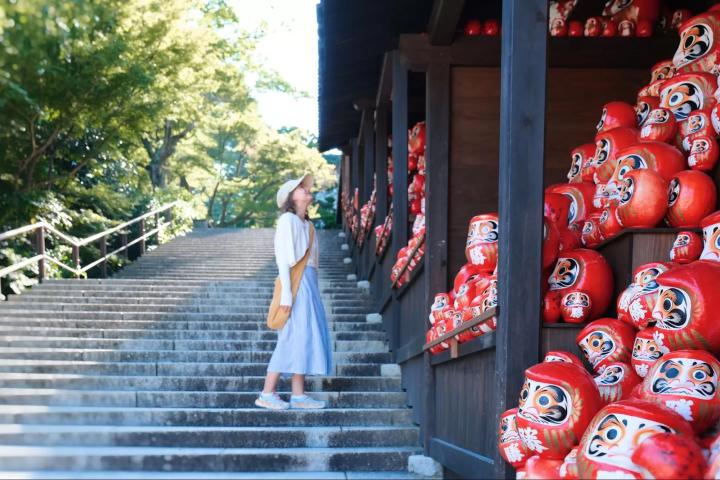
I decided to get a daruma and leave it here so that a part of me can enjoy this beautiful piece of Osaka daily. Spanning approximately 260,000 square meters, the temple grounds offer a sensory feast all year round, from cherry blossoms and azaleas in spring to vibrant autumn foliage.
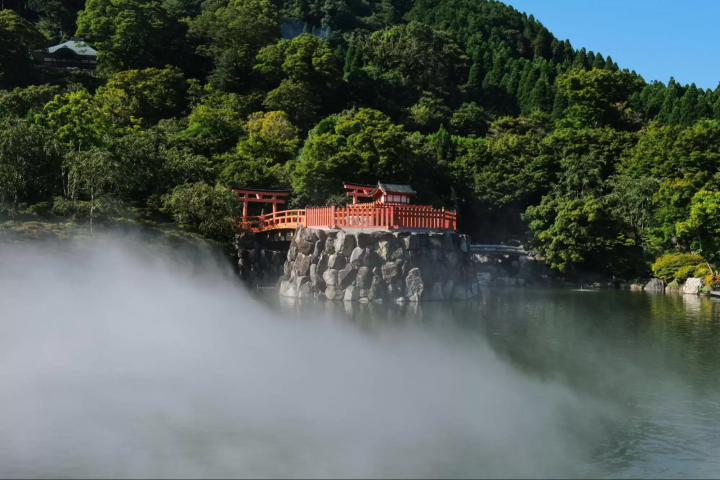
I bought a Daruma doll and left it here, hoping that I could enjoy a beautiful part of Osaka every day. The vast grounds, covering some 260,000 square metres, offer a feast for the senses in every season, from cherry blossoms and azaleas in the spring to vibrant autumn leaves in the fall.
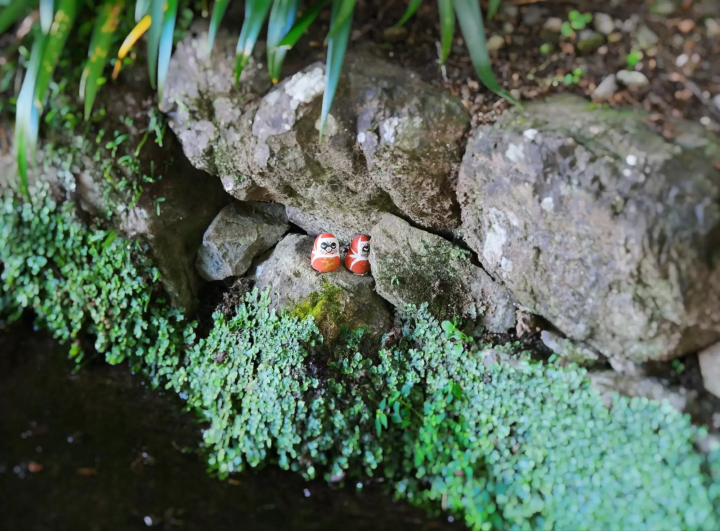
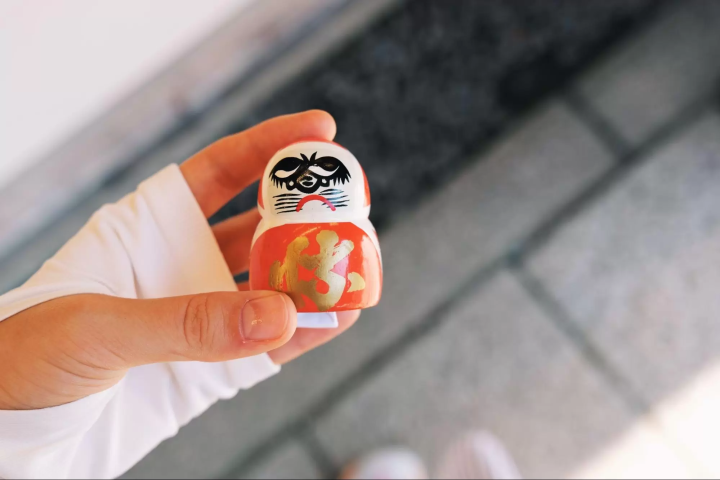

If you are going by bus, remember to check the schedule beforehand, as the buses tend to stop running at 4 pm. Hailing a taxi is also tricky since the area is deep in the mountains. In the worst case, you may need to call a local cab and try to explain how to pick you up (English service is not provided). So planning your return journey is best to avoid getting stranded. Another option would be to hire a guide, as I did this time, to learn more about the area and not worry about being late for the last bus.
I booked the guided tour through DeepExperience, a travel experience booking website .
Amagasaki Canal Expedition Cruise
Switching from the mountains to the sea, Hyogo's coastline near Kobe offers some of the most picturesque views in the Kansai region. The coast is dotted with scenic spots, each offering its unique charm.
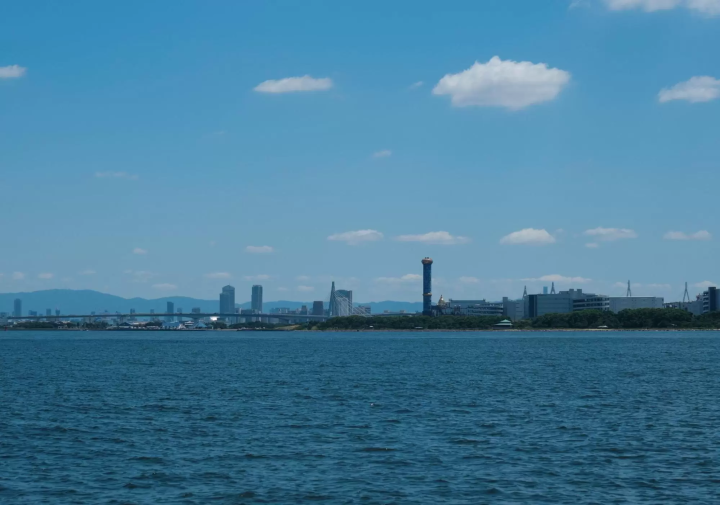
For a different experience, I took a 60-minute cruise (*use the translation function to read the page) along the Amagasaki Canal, known as the "Living Canal." This network of five waterways is connected through the Ama Lock, a Panama-style lock system that regulates water levels for smooth navigation.
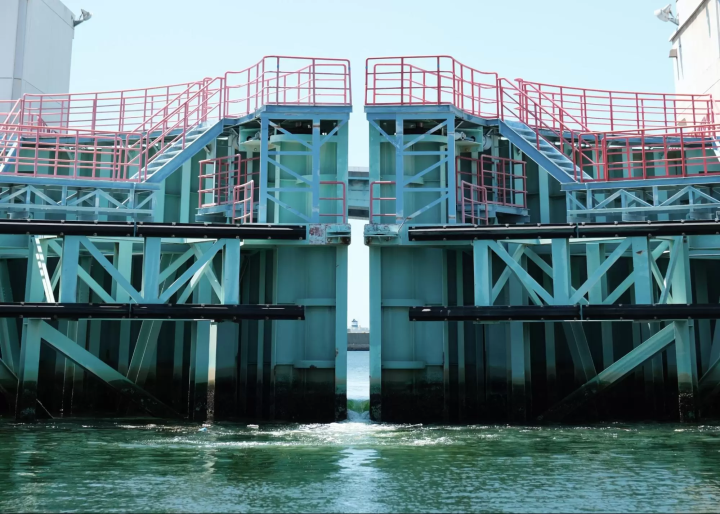
Depending on the tide, both gates of the lock might be open, allowing for an uninterrupted journey. We were fortunate to witness this remarkable engineering feat that has preserved Amagasaki's waterways for decades. Although the system might seem complex, the guide provided explanations pictures that made it easy to understand, even if you missed physics class in school.
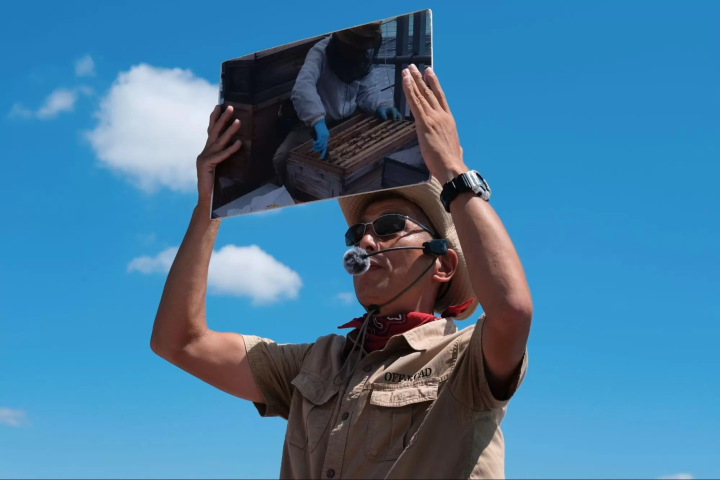
The cruise offers seasonal options, like cherry blossom viewing with local desserts and drinks. I look forward to returning for this spring experience!
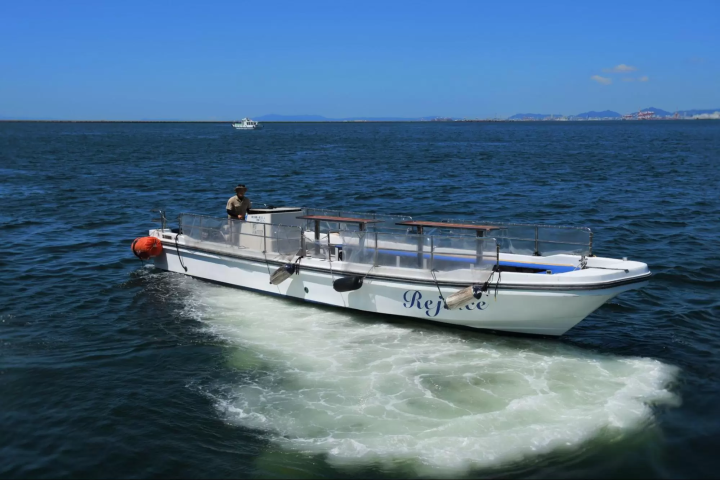
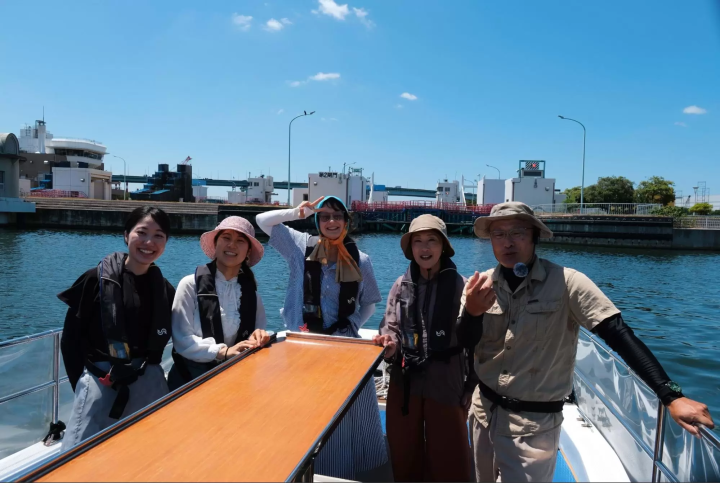
The nearest station is Mukogawa Station on the Hanshin Electric Railway, and you can take a shuttle bus to the Mukogawa Ferry Terminal, which operates every 15 and 45 minutes past the hour.
Conclusion: A Journey of Contrasts
Both Hyogo and Osaka Prefectures offer a perfect blend of delicious food and natural beauty, making them ideal destinations for first-timers and those who think they have seen enough in these two prefectures. There is always a place for special experiences, new hiking routes, and flavors you've never tried before. So, next time you plan a trip to Japan, include both Hyogo and Osaka in your itinerary.
Welcome to Hyogo Hyogo is a gateway to the Kansai region, which nurtures the blessed land that connects the Sea of Japan, the Chugoku Mountains, and the Seto Inland Sea, as well as the blessed climate. There are many spectacular views that will catch your eye, such as Himeji Castle, a World Heritage Site that was selected as one of the 100 Best Cherry Blossom Spots, and the panoramic night view from Mt. Rokko. The world-famous Kobe brand, KOBE BEEF, which is synonymous with Tajima beef, is one of Japan's leading beefs, and the sake rice ``Hyogo Yamada Nishiki'' is a gem that will surprise your tongue. Arima Onsen is a famous hot spring, and Kinosaki Onsen has appeared in many literary works. Surrounded by nature, you can relax your mind and body. You can come across memorable sounds such as the thunderous sounds of the whirlpools of Naruto on Awaji Island, and the dynamic sounds of the fireworks festivals held in various places in the summer. In the herb gardens and botanical gardens in the prefecture, you will be healed by the gentle and pleasant scent of herbs and flowers throughout the four seasons. Enjoy a new journey in Hyogo that stimulates the five senses of sight, taste, touch, hearing, and smell.
The contents on this page may partially contain automatic translation.






























![[Wakayama Guide] Ume and Umeshu (Plum and Plum Wine)](https://resources.matcha-jp.com/resize/720x2000/2025/12/08-252248.webp)
![[2025 Update] From Kansai Airport to Namba - Recommended for travelers with large luggage! Travel comfortably by bus](https://resources.matcha-jp.com/resize/720x2000/2025/10/25-248088.webp)
![[ Naruto City, Tokushima Prefecture ] Experience the world's largest whirlpools up close on a sightseeing boat at the Spring Whirlpool Festival!](https://resources.matcha-jp.com/resize/720x2000/2025/02/05-222727.webp)

![Deep dive into Japanese brands! A tour of famous leather shoe stores with GENSEI & Nin [Madras Edition]](https://resources.matcha-jp.com/resize/720x2000/2025/12/17-253129.webp)